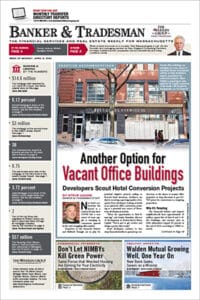
Lew Sichelman
As the market for vacation homes continues to forge ahead at an almost unprecedented pace, the two major suppliers of financing funds have put a lid on the number of mortgages for such properties they will buy from primary lenders.
As of April 1, Fannie Mae and Freddie Mac are limiting their purchases of loans on vacation and investment properties to no more than 7 percent of their portfolios during any 52-week period, striking a blow to a sector that has flourished, in part, because of the pandemic.
The ceiling is “well below” the current 6.4 percent run rate of purchase loan applications for second residences, according to economists at the Mortgage Bankers Association. Moreover, second-home applications in February were up 37 percent from the same month in 2020.
But Fannie and Freddie, the two government-sponsored enterprises that act as intermediaries between worldwide investors and main street lenders, are now required to restrict their activity under a stock purchase agreement negotiated with the Treasury Department during the Trump administration.
The move comes on the heels of another rules change instituted by the GSEs late last year. That change cut back on loans to people who buy into so-called “condotels,” which are properties where individual units are rented through a central reservation system to vacationers on a daily, weekly or monthly basis. That strikes folks who want to purchase apartments, as opposed to individual houses, as well as timeshares and other forms of interval ownership.
Critics Knock GSE Limits
A Fannie spokesman has said his company is concerned that some resort condo structures do not live up to the requirements that they be residential in nature. In the past, Fannie has been more active in resort lending than its secondary market rival.
Neither company has had much to say about the limit on loan purchases. The MBA has raised concerns, maintaining the cap will result in higher interest rates, tighter underwriting and reduced availability. But the Urban Institute says the restriction is folly.
Noting that Fannie and Freddie have been exceeding the 7 percent ceiling since 2013, the nonpartisan think tank says lending on these properties is a “more lucrative part” of their portfolios, enabling them to “cross-subsidize” the rest of their purchases, including loans to low- and moderate-income buyers.
“Even if there were some policy justification to limit the GSEs’ support of these more profitable books of business, the imposition of hard limits makes little sense,” the Urban Institute said in a report.
Right now, though, the demand for second homes is such that more financing choices are needed, not fewer. Indeed, the call for loans on vacation properties is increasing at twice the pace of that for primary residences, according to the latest tabulation from Redfin. The reason? Many former office workers are realizing they can successfully work from almost anywhere.
And Redfin economist Taylor Marr says this is no fad.
“Many Americans have realized remote work is here to stay, allowing some fortunate people to work from a lakefront cabin or a ski condo indefinitely,” he said.
People have always yearned for a place to steal away to for a few days, if not weeks. Some hold their retreats close to the vest, allowing no one to use them, save family. But others have been able to monetize their holiday houses by renting them out. Some do so just to cover their carrying costs, but others pocket a hefty profit.
‘WFVH’ Takes Hold
Now, the work-from-home acronym has taken on another letter: WFVH, as in work-from-vacation-home.
“If you can work from anywhere,” said Gregg Logan of the RCLCO advisory firm, “why not work in a nice location?”
Rich Schulhoff of Brooklyn MLS agrees: “There is a more fluid blend between work and life.”
In an update of a consumer survey taken just before the pandemic, RCLCO found that most second-home markets “experienced dramatic growth” in the latter half of 2020. Not only were a third of current holiday house owners happier with their places than they were before the pandemic, a third of would-be buyers said they were more interested now than prior to COVID-19.
Wannabes are not particularly turned off by what some consider elevated prices in many popular destinations, either. More than half told pollsters that now is the right time to pounce, while just 15 percent said now is not a good time.
Remote work is not the only driving factor for the trend, but it is the strongest one. And Marr thinks many vacation places purchased this year will ultimately become primary residences.
“Even when offices reopen, folks will be able to spend more time than ever before in their second homes because many employers will continue to offer flexible remote-work policies,” the economist said. “With workers still commuting in one or two days a week, resort towns that are near major cities will likely continue to heat up.”
A report from Apartment List counts the “untethered class” as 8.7 million, or 5.6 percent of the total workforce. These are young, mobile workers with remote-friendly occupations who aren’t tied down by family obligations. So, they can go wherever they want.
Perhaps that’s why 15 percent of all newly built houses these days are vacation properties, as the National Association of Home Builders reports.
Lew Sichelman has been covering real estate for more than 50 years. He is a regular contributor to numerous shelter magazines and housing and housing-finance industry publications. Readers can contact him at lsichelman@aol.com.





